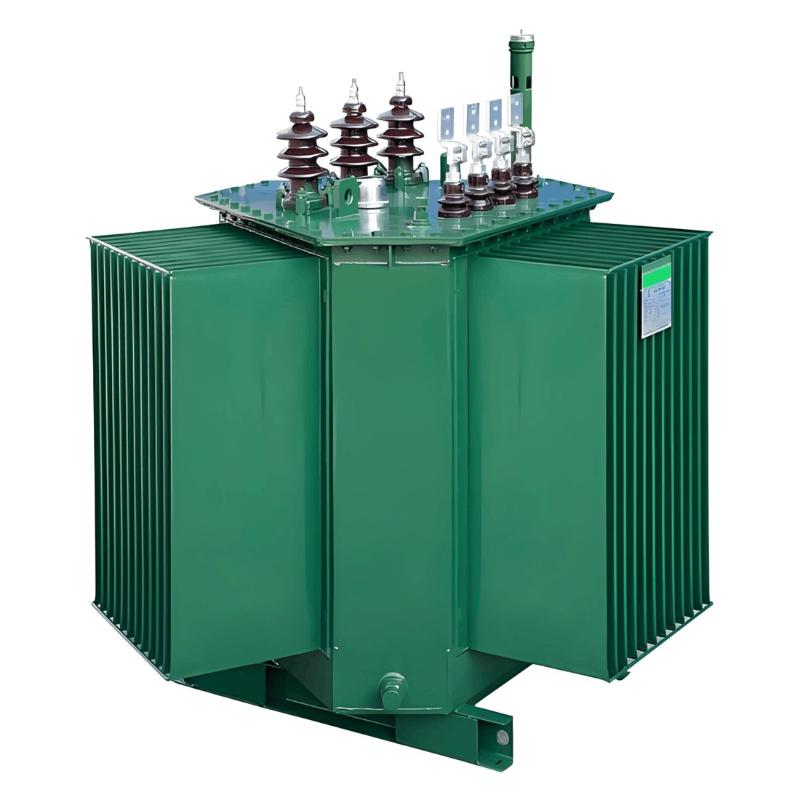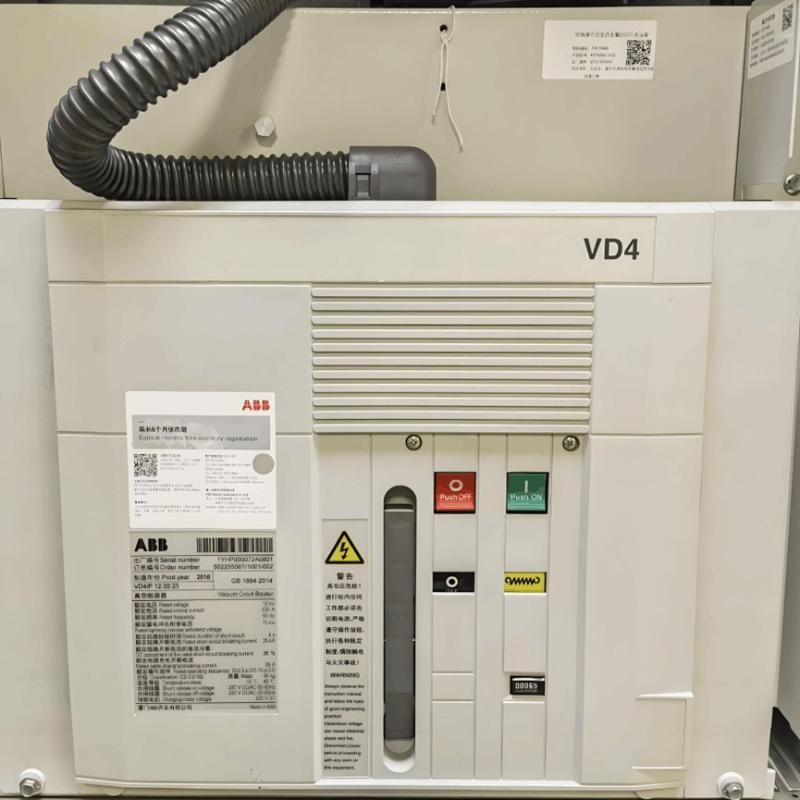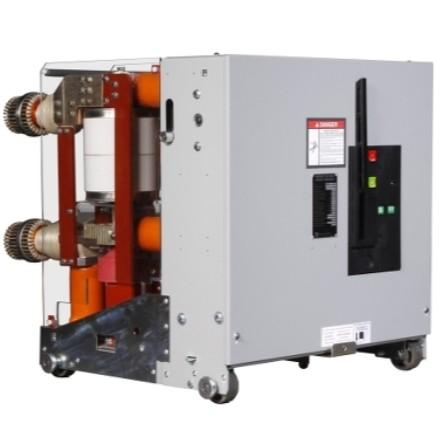1. Ներածություն
Բարձր-լարվա/ցածր-լարվա կառավարվող սեբստացիաները, որոնք հաճախ են անվանում «կառավարվող սեբստացիաներ», կարճ կոչվում են «կառավարվող սեբստացիաներ» կամ «դաշտային սեբստացիաներ»։ Չինաստանում նրանք նախ կոչվել են տարբեր անուններով, ինչպիսիք են «կոմբինացված սեբստացիաներ», «կոմբինացված փոխանցիչներ», «գործարանական կառուցված կոմպակտ սեբստացիաներ», «դաշտային բարձր-լարվա էլեկտրաէներգիայի սենյակներ» և «կառավարվող կոմպակտ սեբստացիաներ»։ Նոյեմբեր 1995-ին Միջազգային Էլեկտրոտեխնիկական Կոմիսիան (IEC) պաշտոնապես անվանել է դրանք «բարձր-լարվա/ցածր-լարվա կառավարվող սեբստացիաներ» IEC 1330 ստանդարտում։ Հիմնական ստանդարտը GB/T 17467—2020 Բարձր-լարվա/Ցածր-լարվա Կառավարվող Սեբստացիաներ նույնպես օգտագործում է «բարձր-լարվա/ցածր-լարվա կառավարվող սեբստացիաներ» անվանումը, որը հետևյալ տեքստում կոչվելու է կառավարվող սեբստացիաներ։
Կառավարվող սեբստացիաների հիմնական հատկություններն են հետևյալը.
Ապրանքի պլանավորումը և արտադրությունը կատարվում են գործարանում։
Ստուգվում են ստանդարտի GB/T 17467-ում նշված տիպային փորձերով։
Ստուգվում են գործարանական փորձերով։
Այն բաղկացած է երեք ֆունկցիոնալ միավորներից, այսինքն փոխանցիչի սենյակ, բարձր-լարվա սկիզբային սենյակ և ցածր-լարվա սկիզբային սենյակ։ Ներսում կառուցված կարևոր կոմպոնենտները (ստանդարտում փոխանցիչները, բարձր-լարվա սկիզբային սարքերը, ցածր-լարվա սկիզբային սարքերը և այլն սահմանվում են որպես կարևոր կոմպոնենտներ) ստուգվում են որպես համապատասխան տիպային և գործարանական փորձերով հաստատված կարգավորումներ։ Այս կոմպոնենտները միմյանց հետ կապվում են և կառուցվում են ընդհանուր կամ դաշտային սենյակում կամ դաշտային կապակցումով կառավարվող սեբստացիայի ապրանքը կազմող միավորները կազմում են։ Տիպային սխեման ստուգվում է GB/T 17467-ի պահանջումների համաձայն տիպային փորձերով և հետո անցնում է գործարանական փորձերի միջոցով օգտագործման համար և օգտագործման համար հաստատվում է օգտագործողների կողմից։ Սա կառավարվող սեբստացիայի տիպական կառուցվածքի հիմնական ձևն է։
Արդյունավետ կիրառություններում կառավարվող սեբստացիաների մեջ ինտեգրվում են ավտոմատացման սարքեր, կապի միավորներ, տեսակարանական համակարգեր, կառավարման էլեկտրաէներգիայի համակարգեր, նարկացումի համակարգեր և այլն, դառնում են կառավարվող սեբստացիաների կարևոր կապակցումներ կամ լրացումներ, որպեսզի բավարարեն տարբեր աշխատանքային պայմանների տարբեր ֆունկցիոնալ պահանջներին։
Կառավարվող սեբստացիաների հիմնական առավելություններն են բարձր ինտեգրացիա, փոքր զբաղեցրած տարածք, կարճ կառուցում, հեշտ ընտրություն կայքի համար, հունգ միջավայրի կարգավորում, հեշտ տեղադրում և օգտագործում, անվտանգ և ավանդաբար հավասարակշռված աշխատանք, ցածր ներդրում և արագ արդյունքներ։
Վերջին տարիների ընթացքում կառավարվող սեբստացիաները կարողացել են արագ զարգանալ և լայն կիրառություն գտնել նոր էներգիայի գեներացիայի և էներգիայի պահեստավորման ոլորտներում, ինչպիսիք են հուր և ֆոտովոլտային էլեկտրոէներգիայի գեներացիա, որը lehetővé teszi az elektromos energia továbbítását vagy cseréjét։
Կառավարվող սեբստացիաների կիրառման միջավայրը. Դաշտային ցանցում կառավարվող սեբստացիաները կատարում են էլեկտրաէներգիայի բաշխումը լարումը նվազեցնելով և համապատասխանեցնելով վերջնապատճառների պահանջներին. էլեկտրաէներգիայի գեներացիայի համակարգում նրանք կատարում են էլեկտրաէներգիայի փոխանցումը գեներացիայի կողմից ցանցին լարումը բարձրացնելով և ցանցին կապվելով։
Կառավարվող սեբստացիաներում ներկայացված փոխանցիչի նշված jemkosság és feszültség szintje a kisállomás mérete és konfigurációjának mérőszámai. Általában, amikor a kisállomásban lévő transzformátor jemkossága körülbelül 10 000 kV·A és a feszültség szintje 40,5 kV és alatta van, a transzformátor és a kapcsolóeszközök vagy egyéb eszközök egészbe vannak összeszerelve, vagy külön modulokban kerülnek a helyszínre, majd ott összeszerelik eggyé.
Amikor a transzformátor jemkossága meghaladja 31 500 kV·A-t, a támogató kapcsolóeszközök és egyéb segédberendezések a kisállomás dobozán belül vannak telepítve, míg a fő transzformátorok kívülről vannak telepítve. Van két vagy több fő transzformátor, amelyek végül összekapcsolódnak, hogy teljes kisállomást alkossanak, így lehetővé téve az elektromos energia továbbítását vagy cseréjét.Ez a cikk a kisállomásokat az iparfejlődési irányzatok vagy a termék fő jellemzői alapján osztályozza, és elemzi fejlődési trendjeiket a kisállomás területén.
2. Prefabricated Substations' Conventional Classification Methods
In practical applications, prefabricated substations vary significantly in terms of the rated capacity and structural characteristics of the transformer, rated voltage level, key components, the material and structural form of the box, application scenarios, and main purposes. Additionally, due to differences in application fields, industry standards and product verification methods also differ. The following classifies prefabricated substations from different dimensions or based on their main characteristics.
1) Classification by the Rated Voltage Level on the High-voltage Side
Prefabricated substations are classified according to the rated voltage level on the high-voltage side into: high-voltage prefabricated substations, medium-voltage prefabricated substations, and low-voltage prefabricated substations. The rated voltage on the high-voltage side of high-voltage prefabricated substations is 110 kV and above, that of medium-voltage prefabricated substations ranges from 3.6 to 40.5 kV, and that of low-voltage prefabricated substations is 1.14 kV and below.
High-voltage prefabricated substations are generally installed close to the center of the electrical load. They often adopt a substation construction mode that combines modular manufacturing with on-site construction. They feature a high voltage level on the high-voltage side of the transformer, a large single-unit capacity, and a relatively large number of primary and secondary supporting equipment.
Medium-voltage prefabricated substations are typically used in power generation systems, at the terminals of the distribution network, or in temporary power supply scenarios. Their scheme configuration is relatively simple, the transformer capacity is relatively small, and the manufacturing process is relatively straightforward.Low-voltage prefabricated substations generally install secondary control equipment, auxiliary equipment, or low-voltage switchgear inside to fulfill specific functional requirements.
2) Classification by the Usage or Installation Environment
They are classified into indoor prefabricated substations and outdoor prefabricated substations according to the usage or installation environment. The commonly mentioned prefabricated substations generally refer to the outdoor type. Additionally, in some factories, buildings, or beside indoor electrical equipment with a relatively small power load, the supporting prefabricated substations are indoor prefabricated substations. Their usage environment or protection level is relatively better than that of outdoor prefabricated substations, and the product itself has slightly lower requirements for environmental protection and safety.
3) Classification by the Product Installation Method
They are classified into fixed prefabricated substations and mobile prefabricated substations according to the product installation method. Generally, prefabricated substations are fixedly installed on the foundation, and their installation position remains unchanged during use.
In some application scenarios, such as mines, oil fields, construction sites, and temporary maintenance power supply scenarios, as the construction progress advances, the location of the prefabricated substation often needs to be changed. There are two types of mobile prefabricated substations: wheeled prefabricated substations and skid-mounted prefabricated substations. When the power supply position of the prefabricated substation needs to be moved, it can be towed and transported using a trailer or a semi-trailer.
4) Classification by the Material Used for Box Manufacturing
According to the different materials used in the manufacture of the box of prefabricated substations, they can be categorized into steel plate type, non-metallic type, stainless steel plate type, aluminum alloy type, color steel composite plate type, Jinbang plate type, magnesium-aluminum-zinc-coated plate type, container type, etc. The main characteristic is that the materials or structural forms of the boxes of prefabricated substations vary, which can meet the different needs of users or usage requirements.
5) Classification by the Box Appearance or the Degree of Matching with the Environment
According to the special requirements of prefabricated substations for the surrounding usage environment, they can be further divided into ordinary type, landscape type (for example, the box surface has styles imitating Chinese ancient architecture, European architecture, artistic modeling, or affixed landscape paintings), etc. For instance, the prefabricated substation used in a park has the shape of a pavilion or a building that matches the park environment, and its surface is decorated with landscape paintings or different color tones.
6) Classification by Different Installation Methods
According to the degree of combination between the prefabricated substation and the foundation, it can be divided into above-ground prefabricated substations, semi-buried prefabricated substations, and fully-buried prefabricated substations.An above-ground prefabricated substation installs the entire prefabricated substation on top of the foundation. In a semi-buried prefabricated substation, the high-voltage switch room and low-voltage switch room among the three basic functional rooms are located above the foundation, while the transformer room is located below and sinks into the foundation.
The overall volume of the product is relatively small. A fully-buried prefabricated substation means that the entire product sinks into the foundation, with only inspection manhole openings or ventilation holes exposed above the foundation. This type of product is particularly suitable for the city center or densely populated core areas, reducing the visual impact of the product on the usage environment and enhancing the safety and reliability of product operation.
7) Classification by Different Arrangement Methods of Functional Rooms
According to the different arrangements or combinations of the three basic functional rooms (high-voltage room, low-voltage room, and transformer room) of prefabricated substations, they can be further divided into "eye"-shaped prefabricated substations, "character-pin"-shaped prefabricated substations, "H"-shaped prefabricated substations, "dumbbell"-shaped prefabricated substations, "field"-shaped prefabricated substations, etc.
In the "eye" -shaped prefabricated substation, the transformer room is arranged in the middle, while the high-voltage room and the low-voltage room are arranged on both sides. Its overall layout is similar to the "Chinese characters" in Chinese characters. In a prefabricated substation in the shape of a "needle", three functional rooms are arranged together, similar to the shape of the Chinese character "".
In the "H" type prefabricated substation, the high-voltage room and the low-voltage room are made into separate boxes, and the live parts of the liquid-immersed transformer are completely enclosed and placed between the two boxes. In addition, mesh shielding is adopted on both sides of the transformer for simple protection and isolation, which improves the heat dissipation conditions during the operation of the transformer. In a prefabricated substation in the shape of a "dumbbell", there is actually a set of high-voltage switch cabinets, two sets of transformers and low-voltage switch cabinets.
The high-voltage room is located in the middle of the box, while the transformer room and the low-voltage room are respectively on both sides of the transformer room. The overall layout of each functional room is in the shape of a "dumbbell". In a "field" -shaped prefabricated substation, the low-voltage room is divided into two independent compartments (the low-voltage switch room and the automation room). Together with the high-voltage room and the transformer room, the overall layout takes on the shape of the Chinese character“Word”.
8) Classification by Customary Appellation
According to the main characteristics and customary appellations of the product, prefabricated substations are divided into European-style substations, American-style substations, and Chinese-style substations.
The key units (high-voltage switchgear, low-voltage switchgear, transformers) of prefabricated substations are all standard products that have been finalized after type tests. Initially, they were mainly introduced from European countries such as Germany, commonly known as "European-style substations". Their main features include the interconnection and combination of key components, flexible and changeable design schemes, and relatively convenient capacity expansion of the transformer. Currently, they are widely used in both the distribution network and power generation systems.
According to the standard JB/T 10217, an American-style substation is a prefabricated substation in which the high-voltage switch is installed in the transformer oil tank and the transformer oil is used as the insulation and arc-extinguishing medium, while the low-voltage switch is installed in the low-voltage box. For example, the 10 kV economical prefabricated substation represented by the American Cooper Company is commonly known as an "American-style substation".
The main feature of an American-style substation is that the high-voltage load switch, transformer core, coil, etc. are immersed in the same oil tank, and the transformer oil is jointly used as the insulation, arc-extinguishing, and cooling medium. It adopts dual-fuse protection, and the fuses have current and temperature dual-sensitive characteristics, which greatly improve the sensitivity and reliability of transformer protection. The main advantages of American-style substations are small size, compact structure, simplicity, and economy.
However, their disadvantages are also evident, such as the rapid decline in the insulation performance of the transformer oil, a simple scheme, and low flexibility. The arc generated by the breaking and closing of the high-voltage switch will cause the deterioration of the transformer oil quality. Currently, 10 kV American-style substations are rarely used in the distribution network and have been classified as products that are being phased out or restricted.
After modification and upgrading, 10 kV American-style substations have increased the voltage level to 35 kV and are applied in new energy power generation systems. Due to their compact structure, small footprint, and low manufacturing cost, they are increasingly being promoted and used.
In recent years, the prefabricated substations used in new energy systems such as wind power and photovoltaic power generation mainly function to transmit electrical energy from the power generation side with a lower voltage level to a 35 kV high-voltage substation. The transformer capacity is getting larger and larger. If designed in the form of "European-style substations", the transformer is installed in the transformer room in a closed manner, and it is difficult to dissipate the generated heat to the outside.
Additional equipment such as fans or heat exchangers is required to address this issue. Therefore, a prefabricated substation with a relatively compact structure and a liquid-immersed transformer installed outside the box has emerged. Its main features are: the transformer is installed outdoors, which solves the problems of the safety protection and heat dissipation of the transformer, and the manufacturing cost is significantly reduced. It appears somewhat similar to an "American-style substation" in appearance, but it essentially still belongs to a "European-style substation". When it first appeared in the industry, it was named a "compact prefabricated substation". Since it was first successfully developed in China and applied to actual engineering projects, it has been commonly known as a "Chinese-style substation" in the industry. However, its product features are more in line with the requirements of the GB/T 40823 standard.

3. Development Trends of Prefabricated Substations
The development trends of prefabricated substations are analyzed from the following different aspects.
1) Diversification of Box Manufacturing Materials and Structural Forms
The most intuitive and noticeable change is that the structural forms of the boxes of prefabricated substations are showing a trend of diversification, which can be observed from the shape, color, and material of the boxes. The box should be in harmony with the surrounding environment. For example, European-style substations generally sink 1 m underground, and the above-ground part is not higher than 1.5 m, which neither affects the long-distance view nor causes accidental injuries if children climb up to play. The materials used are non-metallic, which are environmentally friendly and easily coordinated with the surrounding environment.
Common materials for the outer shell include ordinary steel plates, stainless steel plates, aluminum alloy plates, and color steel composite plates. Years ago, glass fiber-reinforced cement plates, glass fiber-reinforced plastic plates, and non-metallic materials also came into use. Additionally, there may be several materials on the same box. For example, the outside of an ordinary box may be decorated with wooden boards and glazed tile decorative boards, and heat-insulating materials such as expandable polystyrene (EPS), glass fiber, asbestos, and aluminum silicate wool are used in the interlayer of the double-layer structure.
In terms of corrosion resistance, fire resistance, and resistance to fault arcs, non-metallic material shells are significantly superior to metallic material shells. Some prefabricated substations use Jinbang plates as the shell material, which are characterized by being environmentally friendly, lightweight, high-strength, sound-insulating, heat-insulating, water-resistant, fire-resistant, and corrosion-resistant.
2) Strong Promotion and Application of SF6 Gas-insulated Switchgear
For prefabricated substations with a voltage level of 40.5 kV and below, the high-voltage side generally uses circuit breakers or load switches insulated by air or SF6 gas, and some products use load switches with transformer oil as the insulation medium.
In 12 kV prefabricated substations, since the transformer capacity is generally below 1,250 kV·






















